
Our top picks for brilliant, easy-care spring color
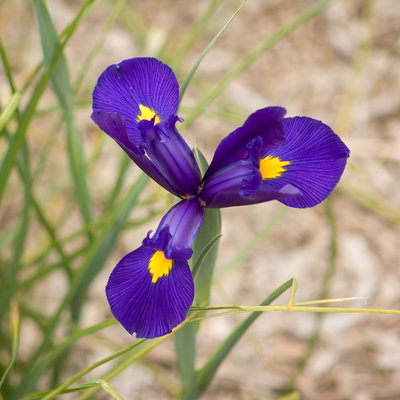
Photo by Kimberley Navabpour
Dutch iris
What they’re like: Growing 2 feet tall from rushlike foliage, Dutch irises are marked by clear, intense colors such as deep blue, purple, and orange, usually with a yellow blotch on the falls (the petals that drape off the sides of each flower).
Our favorites: For blue, try ‘Professor Blaauw’; for magenta purple, ‘Purple Sensation’ (at left); for yellow, ‘Royal Yellow’.
How to display: Mass irises among low ornamental grasses for a meadow effect. Or mix them in pots with yellow violas. They grow in all but the coldest parts of the West and naturalize even in mild climates.
Our top picks for brilliant, easy-care spring color
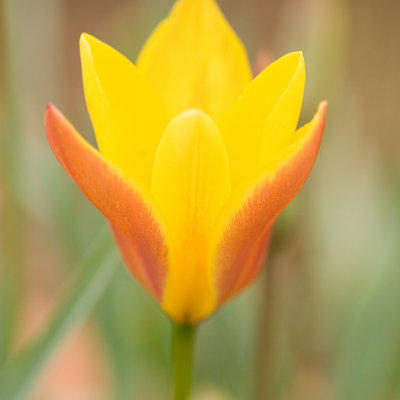
Photo by Kimberley Navabpour
Species tulip
What they’re like: Slender and lovely, Lady, or Candy, tulips are pale yellow or white inside, red to magenta outside; they grow 6 to 9 inches tall.
Our favorites: Blossoms of Tulipa clusiana chrysantha are rose carmine on the outside and bright yellow inside. Or for yellow star-shaped flowers with white tips, try T. tarda.
How to display: For a big show next spring, plant three dozen bulbs 2 inches deep in a shallow, 15-inch-wide terra-cotta container. These tulips grow anywhere and usually come back year after year even in mild-winter climates.
Our top picks for brilliant, easy-care spring color
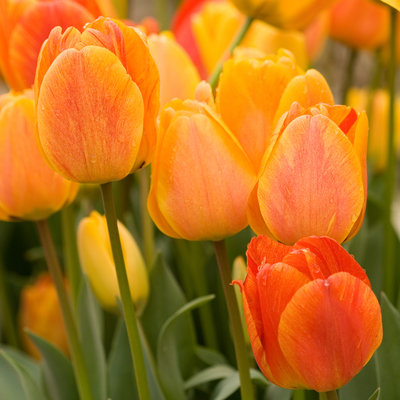
Photo by Kimberley Navabpour
Darwin hybrid tulip
What they’re like: Darwin hybrids are the tallest, largest-flowered tulips. The cup-shaped blooms hold well in a vase, making them ideal for cutting. Most are in the scarlet-orange to red range, but pink, yellow, and white varieties are also available.
Our favorites: With 2-foot stems, ‘Pink Impression’ makes the best pink. For a flame-colored Darwin hybrid, try ‘Beauty of Apeldoorn.’ ‘Daydream’ opens yellow and matures to orange.
How to display: All three varieties are pretty in flower beds with blue forget-me-nots, or massed in containers. They tend to perennialize better than most tulips if they get enough winter chill (six weeks under 45°). In mild-winter areas, chill bulbs in the refrigerator for six weeks before planting.
Our top picks for brilliant, easy-care spring color
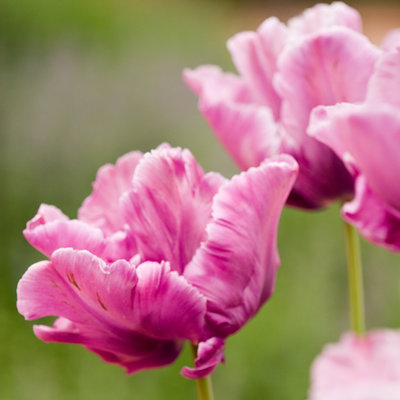
Photo by Kimberley Navabpour
Parrot tulip
What they’re like : Like parrots, these tulips come in brilliant hues (some are striped and flamed in various colors); petals have ruffled or feathery edges. Big flowers are easily animated in the wind.
Our favorites: ‘Blue Parrot’ (at left) has mauve-blue flowers on 18-inch stems. ‘Estella Rijnveld’ is even more flamboyant, with red-and-white flowers on 20-inch stems. For red splashed with green, try the 20-inch-tall ‘Rococo’.
How to display: Plant bulbs shoulder to shoulder in a 16- or 18-inch-diameter pot, or in drifts behind white or purple violas. Before planting in mild-winter climates, chill the bulbs for six weeks.
Our top picks for brilliant, easy-care spring color
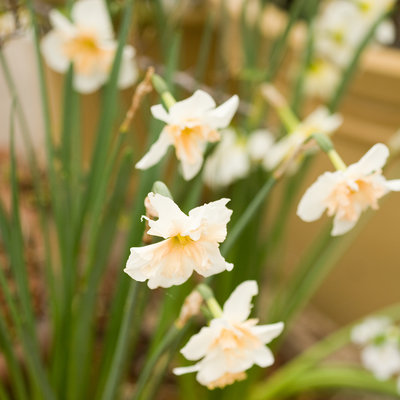
Photo by Kimberley Navabpour
Apricot daffodils
What they’re like : Naturally yellow or white, daffodils sometimes come with a salmon, apricot, or coral corona (the cup in the center of the flower). They stand up to cold and are easy to grow.
Our favorites: ‘Apricot Lace’ has a divided, apricot-colored corona framed against a white perianth (outer petals) on 14-inch stems. For a salmon trumpet against yellow outer petals, try the 18-inch ‘Lorikeet’.
How to display: Pretty when massed in pots or combined with violas in antique shades of apricot and blue. Daffodils grow and perennialize anyplace there’s even modest winter chill.
Our top picks for brilliant, easy-care spring color
Skip Advertisement
Around The Web
Our top picks for brilliant, easy-care spring color
Around The Web
Related Links
SOURCE:http://www.sunset.com/garden/flowers-plants/bulbs-to-plant-in-fall